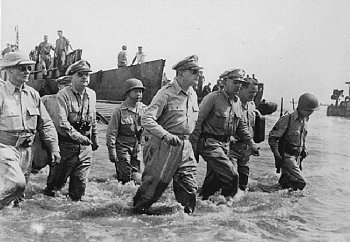Philippine History During Spanish Colonization
The first permanent Spanish settlement in the Philippines was established on Cebu in 1565 by Miguel López de Legazpi, a Spanish expedition commander. This settlement, at present-day Cebu City, became the capital of the new Spanish colony, with Legazpi as its first governor. In 1571 Spanish forces defeated the Muslim ruler Rajah Soliman, who controlled an area of Luzon that contained an ideal harbor for Spanish trade. There Legazpi named Manila as the new capital of the Spanish colony.
The Philippines was Spain’s only colony in Asia. It was ruled as a gobernación, a territory administered by a governor, and was officially subordinate to the Spanish viceroy of New Spain. Spain initially had three principal objectives in colonizing the islands: to secure a share of the spice trade in the Moluccas, to provide a base from which to convert Asians to Christianity, and to convert the people of the Philippine Islands.
Spain never realized the first two objectives and only partially succeeded in the third. Most of the lowland population was rapidly converted to Christianity, while the upland tribes were only nominally converted. Philippine history shows the Muslims of southern Mindanao and the Sulu Archipelago were never baptized and actively resisted Spanish rule for more than 300 years.
Philippine History During American Colonization
After the Spanish-American war, the United States moved quickly to establish a political administration in the Philippines. In 1901 William Howard Taft, later president of the United States, was appointed the first civilian governor-general, replacing the military governor, General Arthur MacArthur. The governor-general was vested with executive powers and served as head of the Philippine Commission, a body appointed by the U.S. president that served as an executive cabinet and held legislative powers. The commission passed many new laws to set up the fundamentals of a national government, including a judicial system, legal code, civil service, and police force.
On December 7, 1941, Japanese forces attacked the U.S. Pacific Fleet at Pearl Harbor, Hawaii, marking the beginning of Japan’s involvement in World War II. Just ten hours later, Japanese air forces struck Clark Air Base in the Philippines, destroying the American B-17 bombers stationed there. Japanese ground troops entered Luzon at Lingayen Gulf on December 22 and occupied Manila on January 2, 1942.
Just before the Pearl Harbor attack, President Roosevelt recalled General Douglas MacArthur into active service, making him commander in chief of the Allied forces in the Philippines, a momentous decision in Philippine history. MacArthur was a former U.S. chief of staff who was in the Philippines serving as field marshal, at Quezon’s invitation, to help build a commonwealth army.

American General Douglas MacArthur - Leyte, Philippines, 1944
In 1942, when it became clear that the American forces were being completely overwhelmed at Bataan and Corregidor, Roosevelt ordered MacArthur to flee and directed him to lead the war against Japan from Australia. The American and Filipino troops who were left behind surrendered at Bataan in April and at Corregidor in May. The Japanese forced their prisoners of war on an infamous Death March across treacherous terrain to a prison camp near Cabunatuan. Thousands of American and Filipino soldiers died of malnutrition, illness, and torture